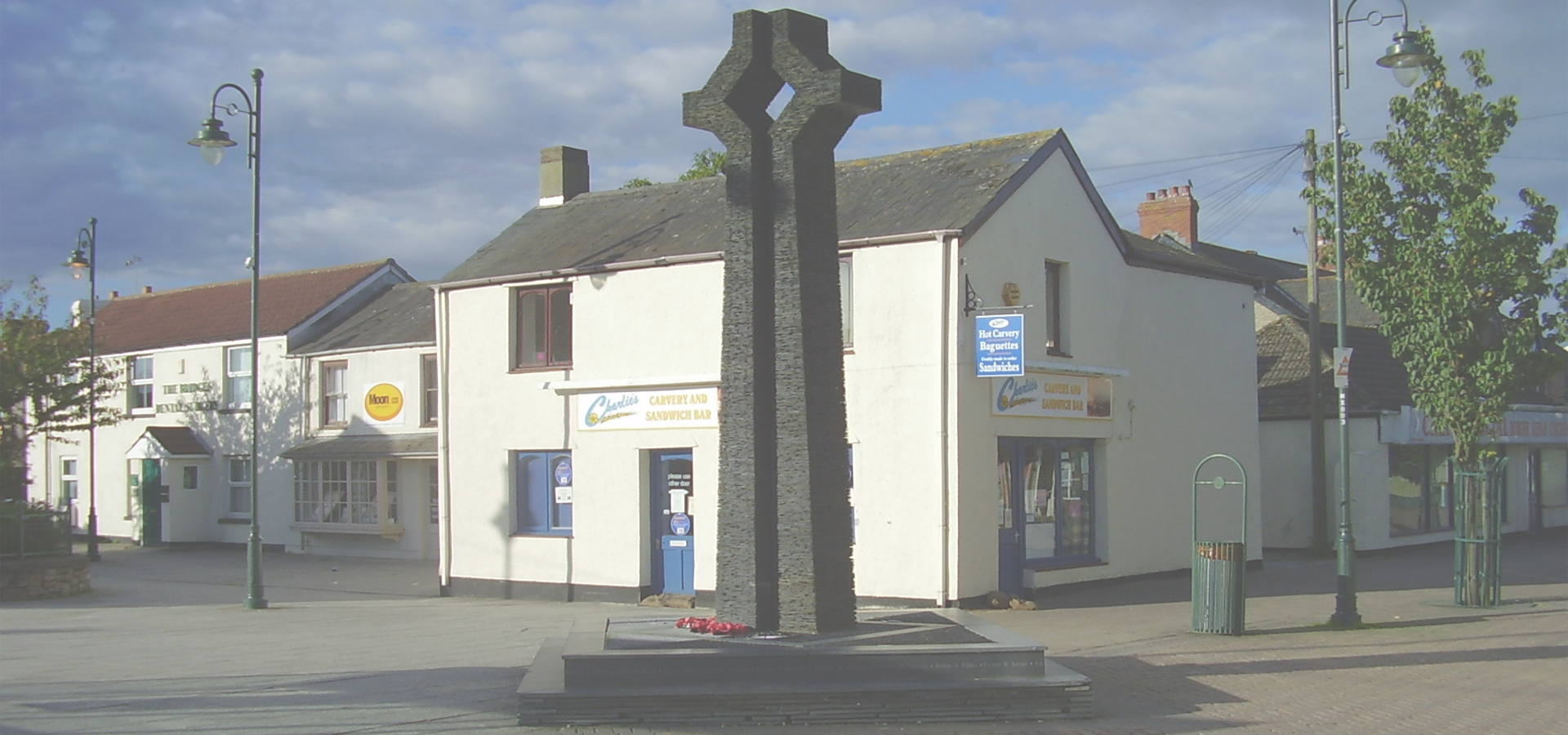Caldicot, Monmouthshire, Wales, United Kingdom
🏴 Caldicot (Cil-y-coed) is a market town and community in Monmouthshire, Wales. The town is located between Chepstow and the city of Newport. The site adjoins the Caldicot Levels, on the north side of the Severn Estuary. It has a large school, Caldicot School, and is known for its medieval castle. The built-up area includes Portskewett.
There was considerable activity in the area during the Bronze Age. Excavations near the Nedern Brook beside the castle revealed a plank from a boat and complex wooden structures in the former river bed. The boat probably traded across the Severn with the farmers and traders of Somerset. Later, in Roman times, it is likely that trading vessels sailed up the Nedern Brook to Caerwent. The discovery of kilns also shows that coarse pottery was produced in the village during Roman times.
In 1074, following the Norman Conquest, the manor of Caldicot was given to Durand, the Sheriff of Gloucester. Caldicot was recorded in Gloucestershire by the Domesday Book in 1086. Its entry reads, Durand the Sheriff holds of the King, one land, in Caerwent, called Caldicot. He has in demesne there 3 ploughs, and 15 half villeins, and 4 bondmen, and one knight. All these have twelve ploughs. There is a mill worth ten shillings.
The name 'Caldicot' is usually stated to derive from the Old English phrase calde cot meaning 'cold hut'. A cold hut is an exposed shelter used by either humans or animals. The modern Welsh name, Cil-y-coed, meaning "corner of the wood", referring to Wentwood, is an example of folk etymology.
One of the oldest buildings in Caldicot, Llanthony Secunda Manor, was built around 1120 as a grange for monks from Llanthony Secunda Priory in Gloucester.
In 1158 the manor of Caldicot passed to Humphrey II de Bohun, who was responsible for building the stone keep and curtain walls of the present-day castle. In 1376 it passed to Thomas Woodstock, third son of King Edward III, when he married Alianore de Bohun. It began to fall into ruins around the 16th century. Caldicot is one of the few villages to appear on the Cambriae Typus map of 1573.
Caldicot, Monmouthshire, Wales, United Kingdom

Caldicot has a population of over 11,000 people. Caldicot also forms part of the wider Monmouthshire District which has a population of over 93,000 people. Caldicot is situated near Abergavenny.
Twin Towns, Sister Cities Caldicot has links with:
🇫🇷 Morières-lès-Avignon, France 🇩🇪 Waghäusel, Germany🇳🇱 Meierijstad 51.583
🏴 Walthamstow 51.584
🏴 Wood Green 51.6
🏴 Pontypridd 51.602
🏴 Caerphilly 51.578
🇩🇪 Gelsenkirchen 51.578
🏴 Shrewsbury -2.751
Locations Near: Caldicot -2.7588,51.5828
🏴 Bristol -2.583,51.45 d: 19.1
🏴 Newport -3,51.583 d: 16.7
🏴 Cwmbran -3.015,51.651 d: 19.2
🏴 Kingswood -2.512,51.46 d: 21.8
🏴 Weston-super-Mare -2.978,51.348 d: 30.2
🏴 Abergavenny -3.017,51.824 d: 32.2
🏴 Cardiff -3.167,51.467 d: 31
🏴 Bath -2.361,51.385 d: 35.2
🏴 Shepton Mallet -2.547,51.19 d: 46.1
🏴 Caerphilly -3.218,51.578 d: 31.7
Antipodal to: Caldicot 177.241,-51.583
🇳🇿 Dunedin 170.474,-45.884 d: 19210.9
🇳🇿 Christchurch 172.617,-43.517 d: 19053.9
🇳🇿 Canterbury 171.58,-43.543 d: 19026.1
🇳🇿 Invercargill 168.373,-46.413 d: 19150.7
🇳🇿 Wellington 174.767,-41.283 d: 18854.4
🇳🇿 Hutt 174.917,-41.217 d: 18848.9
🇳🇿 Lower Hutt 174.917,-41.217 d: 18848.9
🇳🇿 Upper Hutt 175.05,-41.133 d: 18841.2
